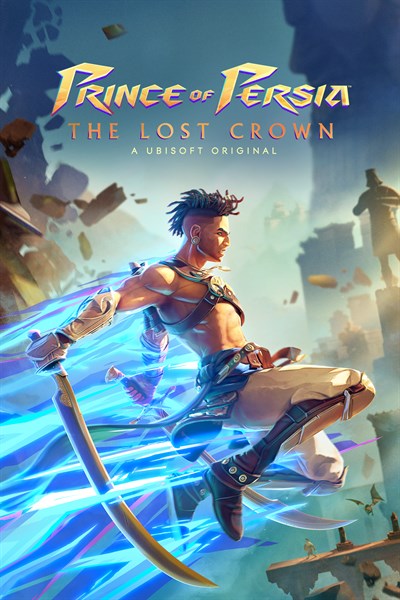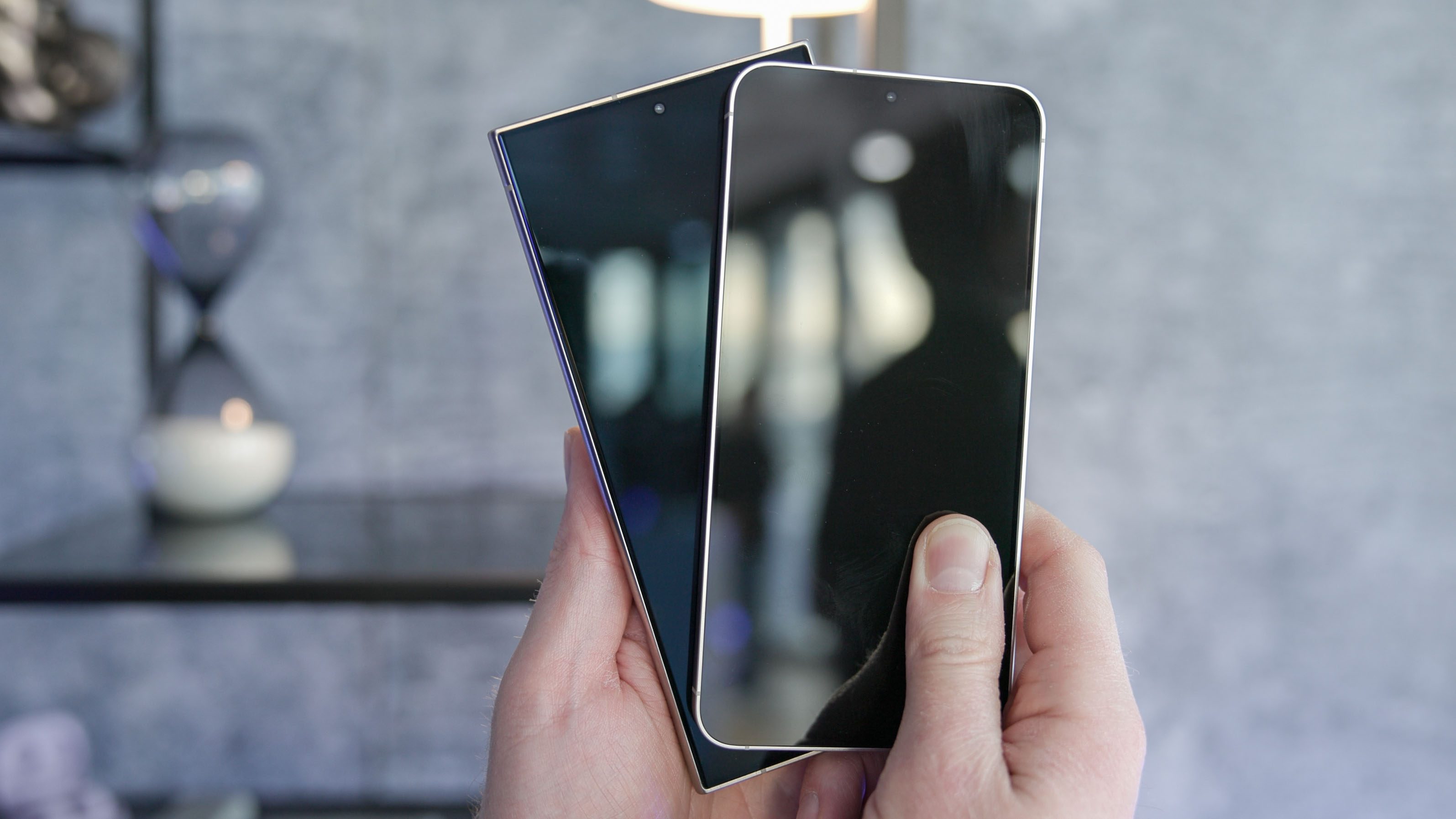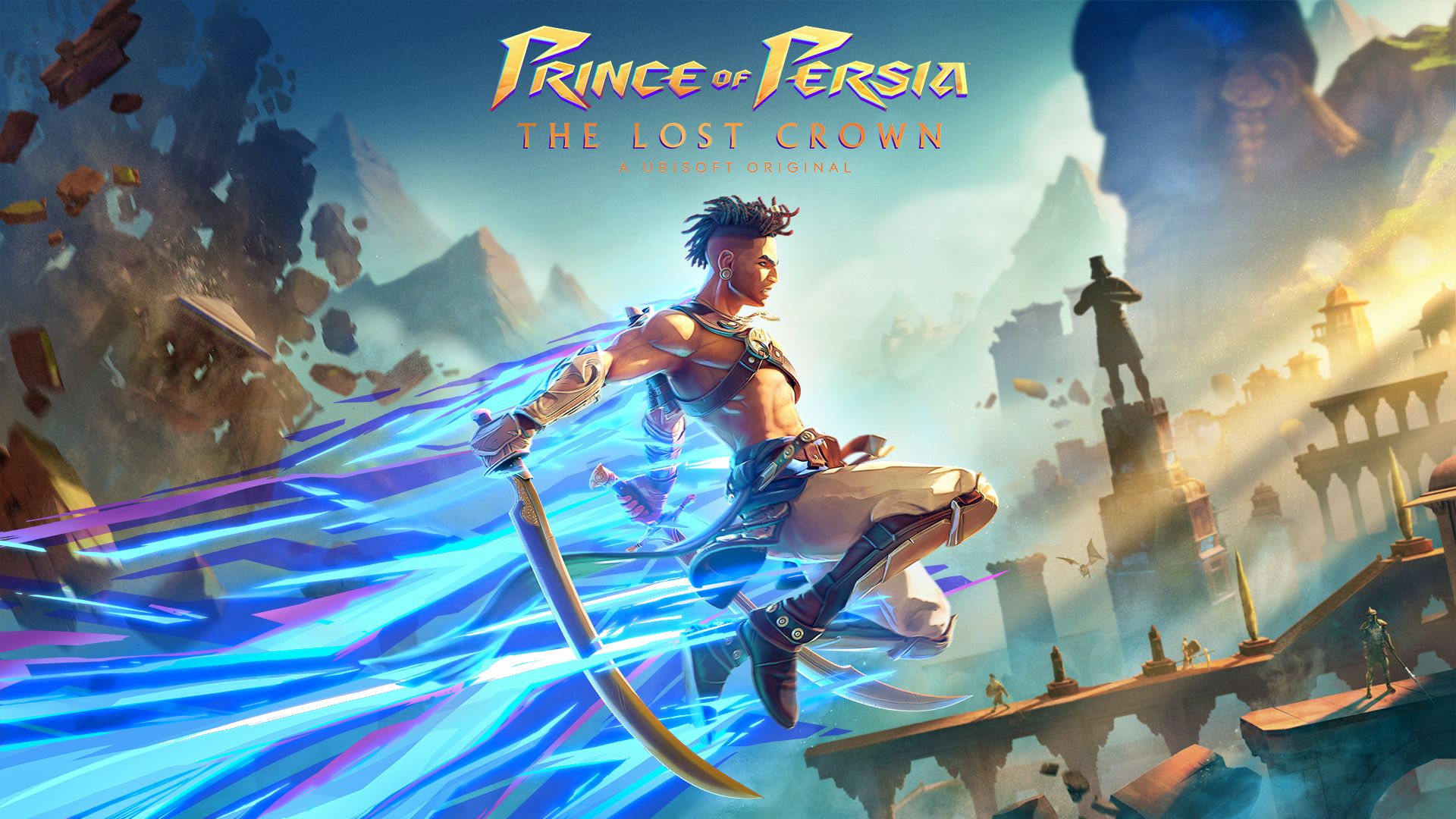
Prince of Persia: The Lost Crown launches tomorrow, January 18, for Xbox One, Xbox Series X|S, and PC, and is available now with a Ubisoft+ subscription or for purchasers of the Digital Deluxe Edition. Prince of Persia: The Lost Crown is an adventure inspired by Persian mythology and the Metroidvania genre, in which players step into the boots of Sargon – the youngest member of Persia’s most elite warriors, the Immortals – and brave the dangers of the mysterious Mount Qaf on a journey to save the kidnapped Prince Ghassan. Wielding acrobatic parkour abilities, mystical time powers, and fluid, combo-driven sword skills, Sargon discovers a world shattered by a time curse, where he’ll battle sand zombies, screen-filling monsters, and even alternate versions of himself.
Prince of Persia: The Lost Crown was developed by Ubisoft Montpellier, the studio behind Rayman Origins and Rayman Legends – and some of those games’ DNA persists in Sargon’s adventure, particularly when it comes to platforming. Like Rayman and crew, Sargon has a certain rhythm and bounce to his movements that helps make exploration a blast, and a lot of his time is spent navigating deviously designed platforming sequences that dare players to thread their way through gauntlets of spikes and traps with increasingly less room for error. To find out more about this connection, and how Ubisoft Montpellier’s experience on the Rayman games helped shape Prince of Persia: The Lost Crown, we spoke with Game Director Mounir Radi.
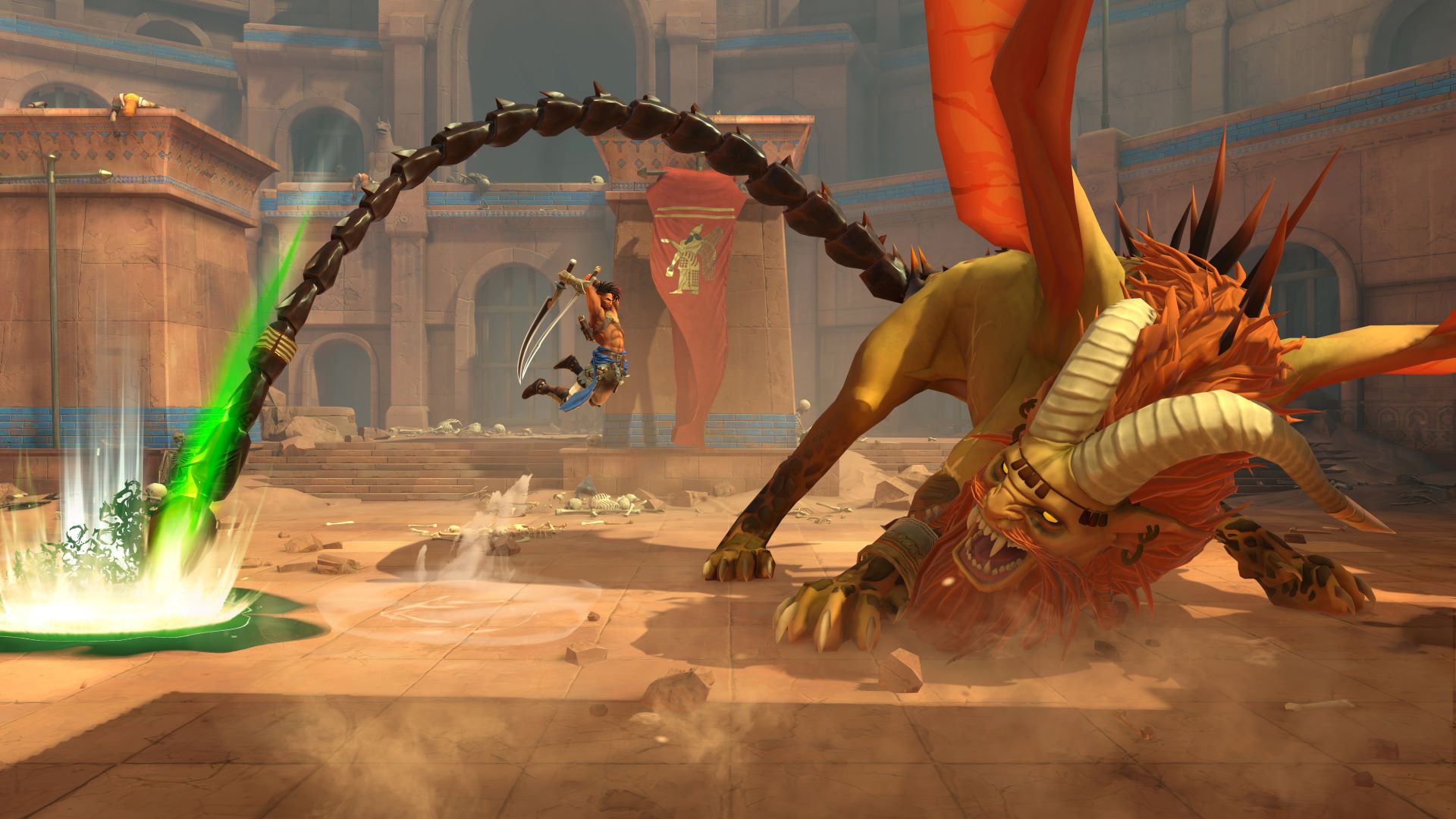
Rayman Origins, Rayman Legends, and Prince of Persia: The Lost Crown are obviously very different games, but is it fair to say the Rayman games were a starting point or reference for The Lost Crown?
For the platforming aspect, yes; not for the combat. Those two things are quite different, but for the platforming aspect, the flow, we are talking about how to convey the weight of your character and the musicality. When we are talking about level design and the way you progress through levels, I like to compare Rayman and Prince of Persia to musical partitions, and this is where we used our expertise the most in mastering the flow of progression.
Some developers tend to build a game before a toy, and we took a lot of time to make a toy first. Before having Sargon and his animation, we worked with just a capsule. Sargon was, for one year, a capsule – and yes, it was super weird! But if you establish a good weight, a good flow, and a good feel with the capsule first – and then bring the animation, the VFX, and the background, you can upgrade this feel in phases. If it’s the other way, you might miss something.
We took a lot of time after that to try to figure out how to convey Sargon’s weight, and to think about his physicality. The weight, for me, is the whole thing, and we took a lot of time figuring out the lengths of specific animations to convey it – sometimes it was just about one frame. One frame, I swear it! We were like, “One frame! No, remove this frame!” We were jumping, bouncing. And it was super-important, because while this approach is super-demanding, it pays off in the end.
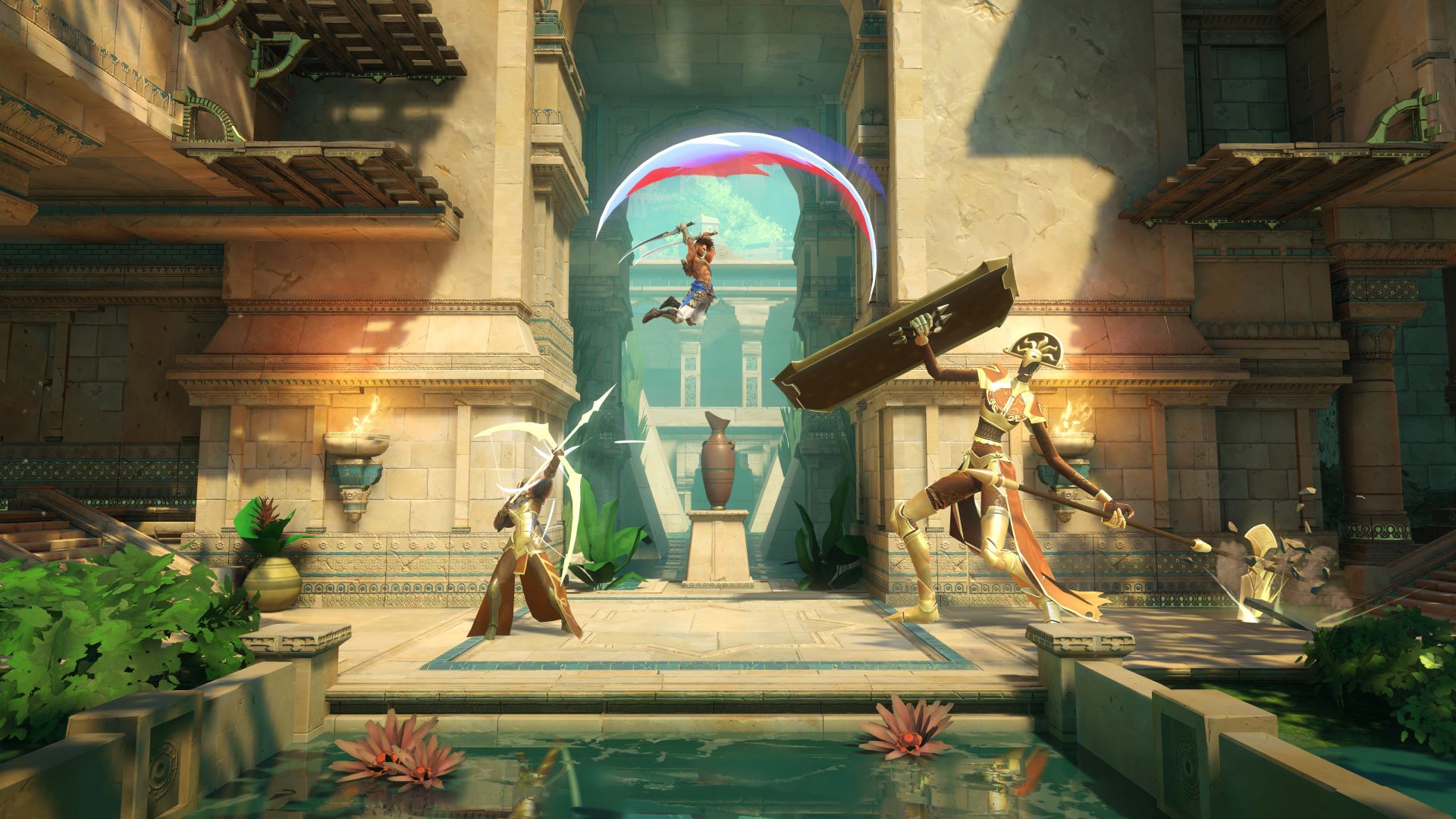
Speaking of weight – what do you need to do differently to communicate the weight of a cartoon character like Rayman, versus a more anime-inspired hero like Sargon? What needs to be different about how they move?
You know, when you deal with a character who has no arms and no legs, you are not exposed to the uncanny valley. Your brain can accept everything; Rayman is using his hair to fly, and that’s OK. But when you are playing with Sargon, you are in semi-reality. You are expecting specific things from his movements. Sometimes you can trick players, but you have to do it step by step, and use specific references that players may know, so they can accept new things.
Sargon is an Immortal; he’s part of a specific world-building logic. Even if it’s mythological, people have weight, so when we were working with our animators and VFX team, and even with the 3D models, we took a lot of time to find the right balance. It’s during special abilities, like when you parry, when you are using fancy executions, and when you use your Athra Surge abilities, that you reach the highest point of spectacularity, of superheroic capacity. During this, we bring in these flashy colors, which is our way to indicate that you just unleashed a super ability, and you performed it the right way – because these are not something you can perform without a challenge. To perform an execution, you have to parry; to perform an Athra Surge, you have to build up your gauge.
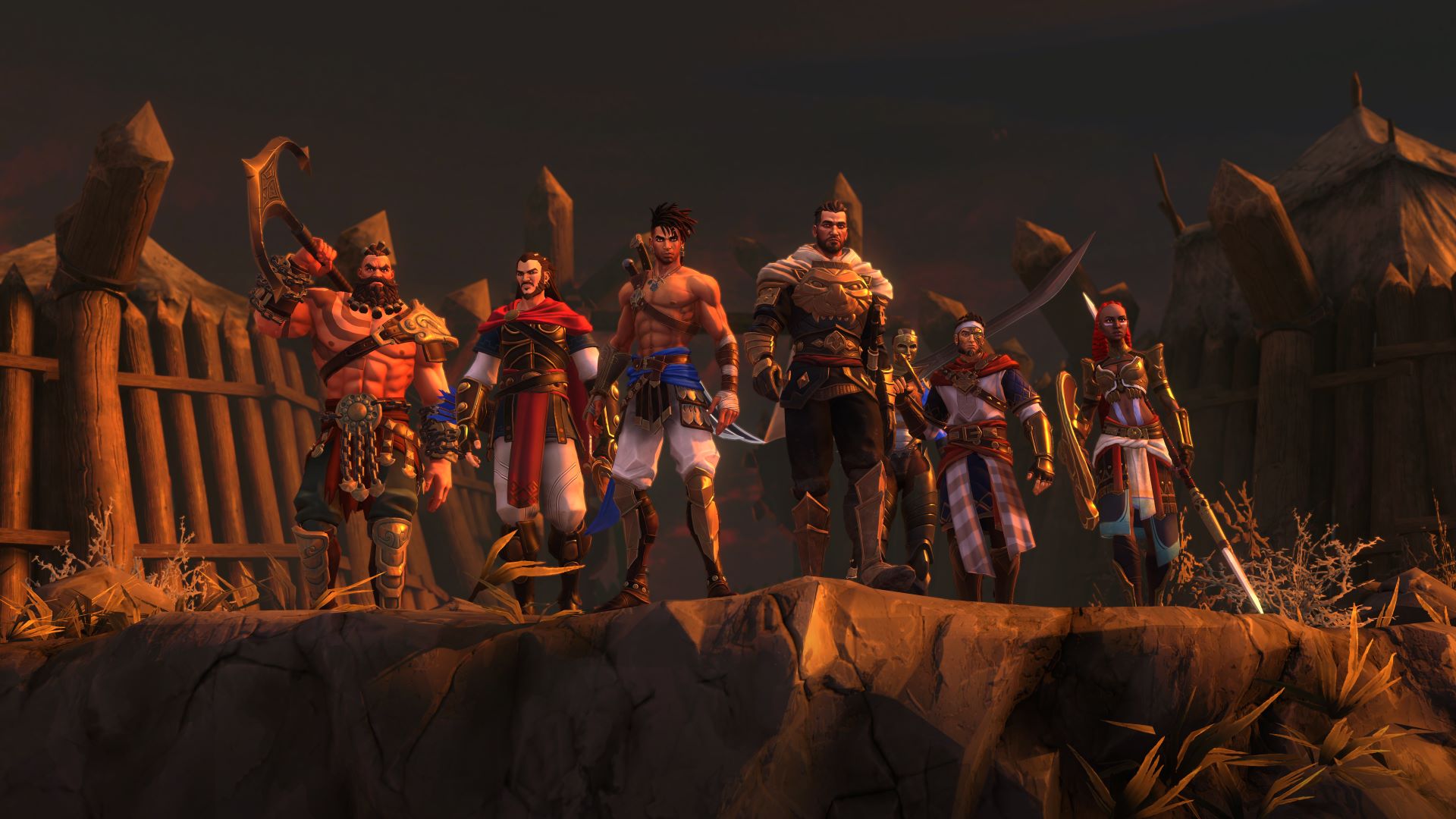
So we used fighting games as a reference, like Super Smash Bros. or Street Fighter, because in those games, there’s purity in the balance between each attack; one attack, one function. That’s why there’s one button in Prince of Persia: The Lost Crown for attacking.
Musicality in the Rayman games and Prince of Persia: The Lost Crown is something you’ve spoken about previously, with the idea that platforming has a clear rhythm. How does that affect the shape the level design takes? How do you find a beat that works consistently?
It’s about foreshadowing the path for the players. We used the camera to ensure that the path is super-readable, and made sure that the blocking elements of level design present a specific variety. Imagine that you’re on the ground and you have to go upward; in some games, you’d jump three times to rise three levels, so it’s hitting the same button three times – pam, pam, pam! The same button triggers the same sound, the same animation, the same VFX. That can cause fatigue, and we tried to manage this fatigue – to bring short notes, long notes, and to be sure that players have the ability to create a partition.
Level design offers different ways to create different partitions, and it involves a lot of iteration, because sometimes you have friction. Wwhen you see people being exposed to a challenge for the first time, and you know that they are in the zone, and they are able to pass the challenge, that means that you got it right. That means that you took enough time to train them before, so that they could absorb the mechanics – and that now, with their reflexes, they can predict the path. They have the ability to stay in the flow.
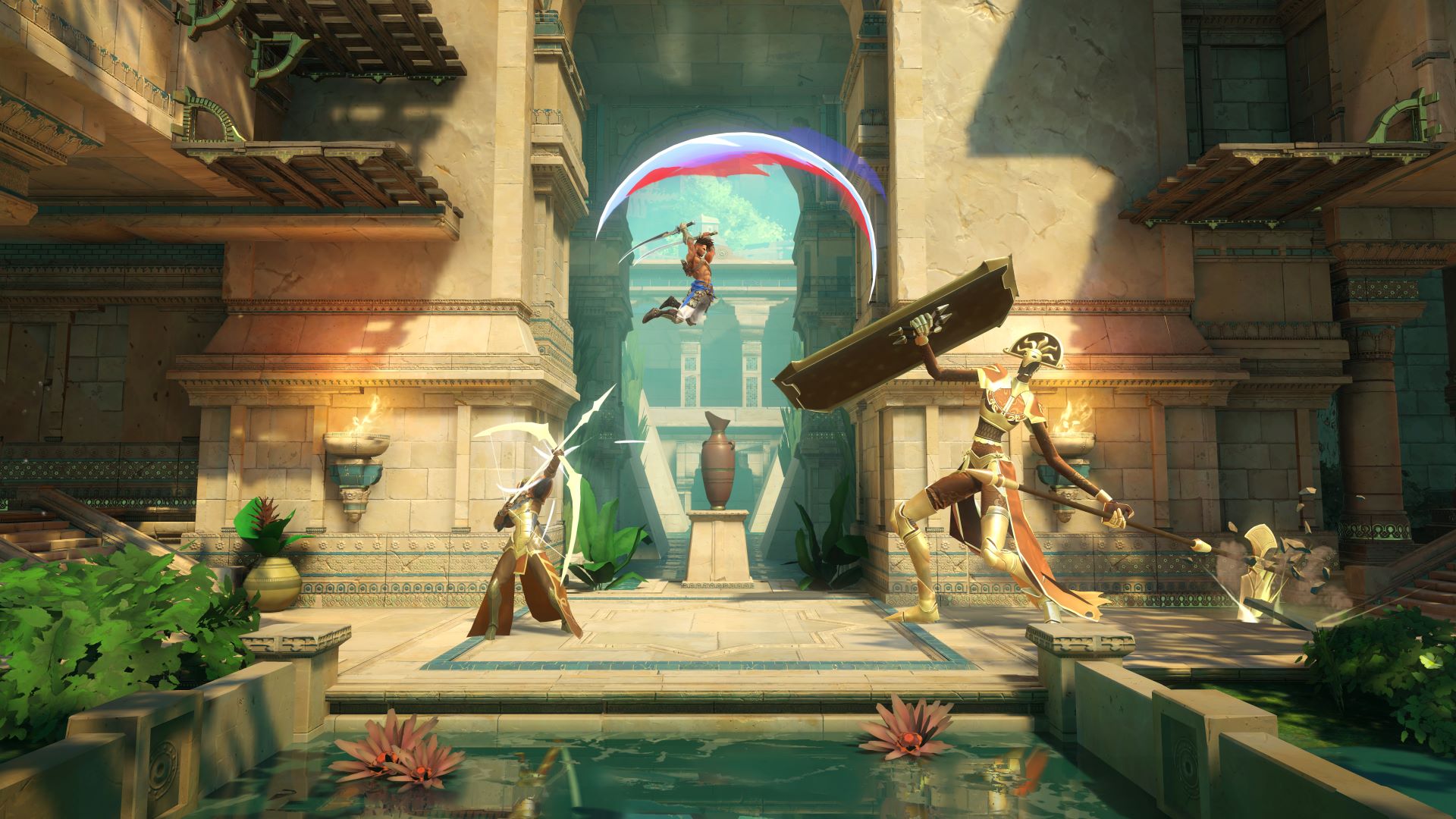
One clear callback to the Rayman games is the Xerxes Coins, which echo the Skull Coins in Rayman Origins and Legends. They float in midair close to hazards that can often be very challenging to navigate, and players need not only to grab the coins, but to land safely in order to claim them. Have the developers always had that affinity for this kind of very tight “splatforming,” or is it something that developed over time?
It was right from the beginning. When you’re talking about exploration, people are free to experiment with different abilities in this world. So sometimes, when you have a specific path and you give players some tools, you cannot control how they beat that path, even if there’s a specific challenge. By offering them Xerxes challenges, we were more in control. We were saying, “you have to beat it like this, to play it like this, in order to play as intended.” That was our way to get players to play specific notes in a place where they’re aware of the composition. They can use the same attacks, they can use the same amulets, they can use the same abilities to progress, but when we use Xerxes challenges, we are telling our players to play with these specific conditions or elements.
Prince of Persia: The Lost Crown has a few superficial similarities with Rayman in terms of combat – the feel of the aerial slam attacks, for example – but The Lost Crown’s combat is much more elaborate and responsive, in a way that’s rare even for Metroidvanias. How did that new approach take shape?
First and foremost, before even going into the Metroidvania genre, we wanted it to be a Prince of Persia game. In Prince of Persia, when you venture into the world and fight against enemies, colliding with enemies is not a danger. In a lot of Metroidvanias, enemies are obstacles: if you touch them, you’ll take a hit. But that was not what we wanted to achieve here, because for me, Prince of Persia is about experimentation.
In the previous games, and even in the Sands of Time trilogy, the choreographic aspect of the combat was animation-driven: You press a button, you execute an animation. Sometimes it’s a flowy animation and an execution, but there’s a balance between execution and spectacle. To make sure that this new choreography is in the hands of the player, we wanted to be sure that the game is super-responsive. So the choreographic aspect is back, but now it’s the player doing their own choreography with the toolsets we give them.
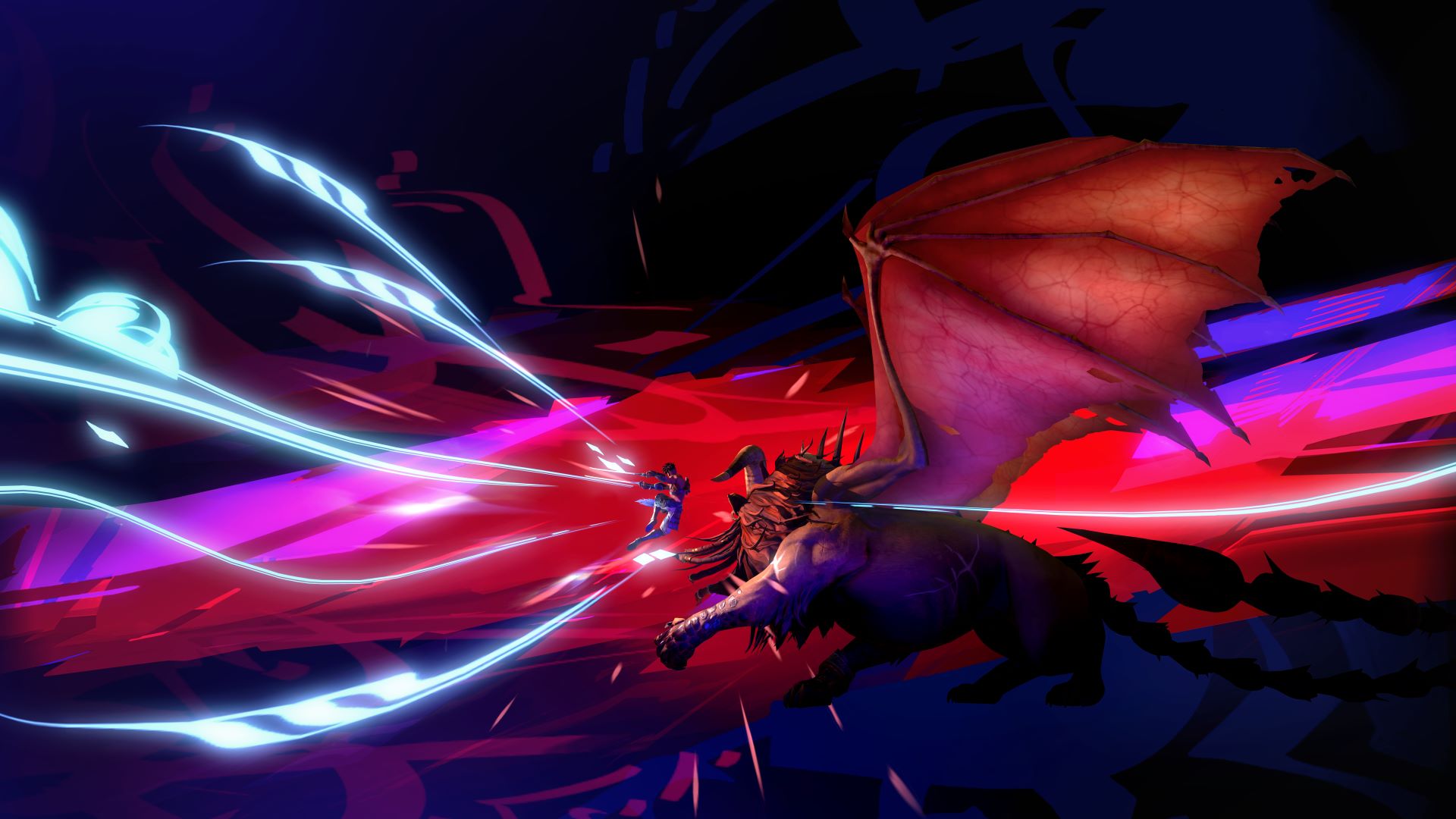
This is a new approach, and one intended for fairness – but also because if a player uses a defensive mechanic like a parry, dodge, or even a jump, it could cancel any animation. And that was the beginning, because this is less a vertical approach to game design, and much more of a horizontal approach to game design: Give them toolsets, amulets, and special abilities, and they can compose their own playstyle. I think that’s part of the legacy of Prince of Persia, of respecting players’ cleverness. This is authored gameplay, and players are free to compose, to create, to build their own choreography.
Prince of Persia: The Lost Crown launches on January 18 for Xbox One, Xbox Series X|S, and PC – and players with a Ubisoft+ subscription, or who purchase the Digital Deluxe Edition, can start playing Sargon’s adventure right away. Secrets and danger abound throughout Mount Qaf – along with plenty of opportunities to push your combat and platforming skills to the limit – so get ready to explore, battle, and see just how warped a time-cursed mountain citadel can become.

Prince of Persia The Lost Crown
UBISOFT
$49.99
Pre-order to get an exclusive in-game Warrior Within outfit!
Dash into a stylish and thrilling action-adventure platformer set in a mythological Persian world where the boundaries of time and space are yours to manipulate. Play as Sargon and evolve from sword-wielding prodigy to extraordinary legend as you master acrobatic combat and unlock new Time Powers and unique super abilities.
UNLEASH YOUR INNER WARRIOR
Use your Time Powers, combat, and platforming skills to perform deadly combos and defeat time-corrupted enemies and mythological creatures.
LOSE YOURSELF IN THE PRODIGIOUS MOUNT QAF
Discover a cursed Persian-inspired world filled with larger-than-life landmarks and explore a variety of highly detailed biomes, each with their own identity, wonder, and danger.
LIVE AN EPIC ADVENTURE
Immerse yourself in a Persian mythological fantasy through an intriguing and original story as you use your wits to solve puzzles, find hidden treasures, and complete quests to learn more about this corrupted place.
This game leverages Smart Delivery allowing access to both the Xbox One title and the Xbox Series X|S title.
Prince of Persia: The Lost Crown launches tomorrow, January 18, for Xbox One, Xbox Series X|S, and PC, and is available now with a Ubisoft+ subscription or for purchasers of the Digital Deluxe Edition. Prince of Persia: The Lost Crown is an adventure inspired by Persian mythology and the Metroidvania genre, in which players step into the boots of Sargon – the youngest member of Persia’s most elite warriors, the Immortals – and brave the dangers of the mysterious Mount Qaf on a journey to save the kidnapped Prince Ghassan. Wielding acrobatic parkour abilities, mystical time powers, and fluid, combo-driven sword skills, Sargon discovers a world shattered by a time curse, where he’ll battle sand zombies, screen-filling monsters, and even alternate versions of himself.
Prince of Persia: The Lost Crown was developed by Ubisoft Montpellier, the studio behind Rayman Origins and Rayman Legends – and some of those games’ DNA persists in Sargon’s adventure, particularly when it comes to platforming. Like Rayman and crew, Sargon has a certain rhythm and bounce to his movements that helps make exploration a blast, and a lot of his time is spent navigating deviously designed platforming sequences that dare players to thread their way through gauntlets of spikes and traps with increasingly less room for error. To find out more about this connection, and how Ubisoft Montpellier’s experience on the Rayman games helped shape Prince of Persia: The Lost Crown, we spoke with Game Director Mounir Radi.

Rayman Origins, Rayman Legends, and Prince of Persia: The Lost Crown are obviously very different games, but is it fair to say the Rayman games were a starting point or reference for The Lost Crown?
For the platforming aspect, yes; not for the combat. Those two things are quite different, but for the platforming aspect, the flow, we are talking about how to convey the weight of your character and the musicality. When we are talking about level design and the way you progress through levels, I like to compare Rayman and Prince of Persia to musical partitions, and this is where we used our expertise the most in mastering the flow of progression.
Some developers tend to build a game before a toy, and we took a lot of time to make a toy first. Before having Sargon and his animation, we worked with just a capsule. Sargon was, for one year, a capsule – and yes, it was super weird! But if you establish a good weight, a good flow, and a good feel with the capsule first – and then bring the animation, the VFX, and the background, you can upgrade this feel in phases. If it’s the other way, you might miss something.
We took a lot of time after that to try to figure out how to convey Sargon’s weight, and to think about his physicality. The weight, for me, is the whole thing, and we took a lot of time figuring out the lengths of specific animations to convey it – sometimes it was just about one frame. One frame, I swear it! We were like, “One frame! No, remove this frame!” We were jumping, bouncing. And it was super-important, because while this approach is super-demanding, it pays off in the end.

Speaking of weight – what do you need to do differently to communicate the weight of a cartoon character like Rayman, versus a more anime-inspired hero like Sargon? What needs to be different about how they move?
You know, when you deal with a character who has no arms and no legs, you are not exposed to the uncanny valley. Your brain can accept everything; Rayman is using his hair to fly, and that’s OK. But when you are playing with Sargon, you are in semi-reality. You are expecting specific things from his movements. Sometimes you can trick players, but you have to do it step by step, and use specific references that players may know, so they can accept new things.
Sargon is an Immortal; he’s part of a specific world-building logic. Even if it’s mythological, people have weight, so when we were working with our animators and VFX team, and even with the 3D models, we took a lot of time to find the right balance. It’s during special abilities, like when you parry, when you are using fancy executions, and when you use your Athra Surge abilities, that you reach the highest point of spectacularity, of superheroic capacity. During this, we bring in these flashy colors, which is our way to indicate that you just unleashed a super ability, and you performed it the right way – because these are not something you can perform without a challenge. To perform an execution, you have to parry; to perform an Athra Surge, you have to build up your gauge.

So we used fighting games as a reference, like Super Smash Bros. or Street Fighter, because in those games, there’s purity in the balance between each attack; one attack, one function. That’s why there’s one button in Prince of Persia: The Lost Crown for attacking.
Musicality in the Rayman games and Prince of Persia: The Lost Crown is something you’ve spoken about previously, with the idea that platforming has a clear rhythm. How does that affect the shape the level design takes? How do you find a beat that works consistently?
It’s about foreshadowing the path for the players. We used the camera to ensure that the path is super-readable, and made sure that the blocking elements of level design present a specific variety. Imagine that you’re on the ground and you have to go upward; in some games, you’d jump three times to rise three levels, so it’s hitting the same button three times – pam, pam, pam! The same button triggers the same sound, the same animation, the same VFX. That can cause fatigue, and we tried to manage this fatigue – to bring short notes, long notes, and to be sure that players have the ability to create a partition.
Level design offers different ways to create different partitions, and it involves a lot of iteration, because sometimes you have friction. Wwhen you see people being exposed to a challenge for the first time, and you know that they are in the zone, and they are able to pass the challenge, that means that you got it right. That means that you took enough time to train them before, so that they could absorb the mechanics – and that now, with their reflexes, they can predict the path. They have the ability to stay in the flow.

One clear callback to the Rayman games is the Xerxes Coins, which echo the Skull Coins in Rayman Origins and Legends. They float in midair close to hazards that can often be very challenging to navigate, and players need not only to grab the coins, but to land safely in order to claim them. Have the developers always had that affinity for this kind of very tight “splatforming,” or is it something that developed over time?
It was right from the beginning. When you’re talking about exploration, people are free to experiment with different abilities in this world. So sometimes, when you have a specific path and you give players some tools, you cannot control how they beat that path, even if there’s a specific challenge. By offering them Xerxes challenges, we were more in control. We were saying, “you have to beat it like this, to play it like this, in order to play as intended.” That was our way to get players to play specific notes in a place where they’re aware of the composition. They can use the same attacks, they can use the same amulets, they can use the same abilities to progress, but when we use Xerxes challenges, we are telling our players to play with these specific conditions or elements.
Prince of Persia: The Lost Crown has a few superficial similarities with Rayman in terms of combat – the feel of the aerial slam attacks, for example – but The Lost Crown’s combat is much more elaborate and responsive, in a way that’s rare even for Metroidvanias. How did that new approach take shape?
First and foremost, before even going into the Metroidvania genre, we wanted it to be a Prince of Persia game. In Prince of Persia, when you venture into the world and fight against enemies, colliding with enemies is not a danger. In a lot of Metroidvanias, enemies are obstacles: if you touch them, you’ll take a hit. But that was not what we wanted to achieve here, because for me, Prince of Persia is about experimentation.
In the previous games, and even in the Sands of Time trilogy, the choreographic aspect of the combat was animation-driven: You press a button, you execute an animation. Sometimes it’s a flowy animation and an execution, but there’s a balance between execution and spectacle. To make sure that this new choreography is in the hands of the player, we wanted to be sure that the game is super-responsive. So the choreographic aspect is back, but now it’s the player doing their own choreography with the toolsets we give them.

This is a new approach, and one intended for fairness – but also because if a player uses a defensive mechanic like a parry, dodge, or even a jump, it could cancel any animation. And that was the beginning, because this is less a vertical approach to game design, and much more of a horizontal approach to game design: Give them toolsets, amulets, and special abilities, and they can compose their own playstyle. I think that’s part of the legacy of Prince of Persia, of respecting players’ cleverness. This is authored gameplay, and players are free to compose, to create, to build their own choreography.
Prince of Persia: The Lost Crown launches on January 18 for Xbox One, Xbox Series X|S, and PC – and players with a Ubisoft+ subscription, or who purchase the Digital Deluxe Edition, can start playing Sargon’s adventure right away. Secrets and danger abound throughout Mount Qaf – along with plenty of opportunities to push your combat and platforming skills to the limit – so get ready to explore, battle, and see just how warped a time-cursed mountain citadel can become.

Prince of Persia The Lost Crown
UBISOFT
$49.99
Pre-order to get an exclusive in-game Warrior Within outfit!
Dash into a stylish and thrilling action-adventure platformer set in a mythological Persian world where the boundaries of time and space are yours to manipulate. Play as Sargon and evolve from sword-wielding prodigy to extraordinary legend as you master acrobatic combat and unlock new Time Powers and unique super abilities.
UNLEASH YOUR INNER WARRIOR
Use your Time Powers, combat, and platforming skills to perform deadly combos and defeat time-corrupted enemies and mythological creatures.
LOSE YOURSELF IN THE PRODIGIOUS MOUNT QAF
Discover a cursed Persian-inspired world filled with larger-than-life landmarks and explore a variety of highly detailed biomes, each with their own identity, wonder, and danger.
LIVE AN EPIC ADVENTURE
Immerse yourself in a Persian mythological fantasy through an intriguing and original story as you use your wits to solve puzzles, find hidden treasures, and complete quests to learn more about this corrupted place.
This game leverages Smart Delivery allowing access to both the Xbox One title and the Xbox Series X|S title.

